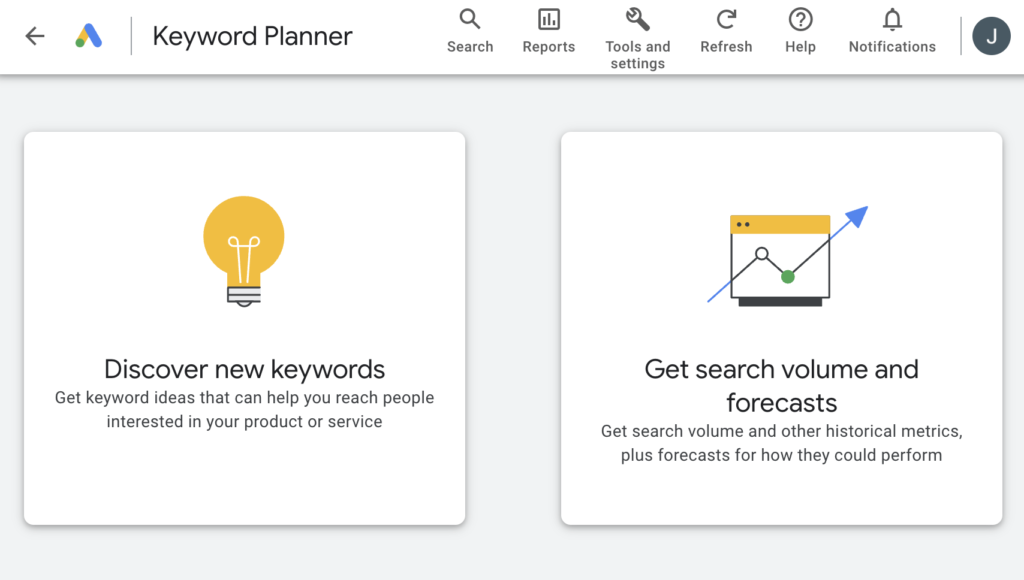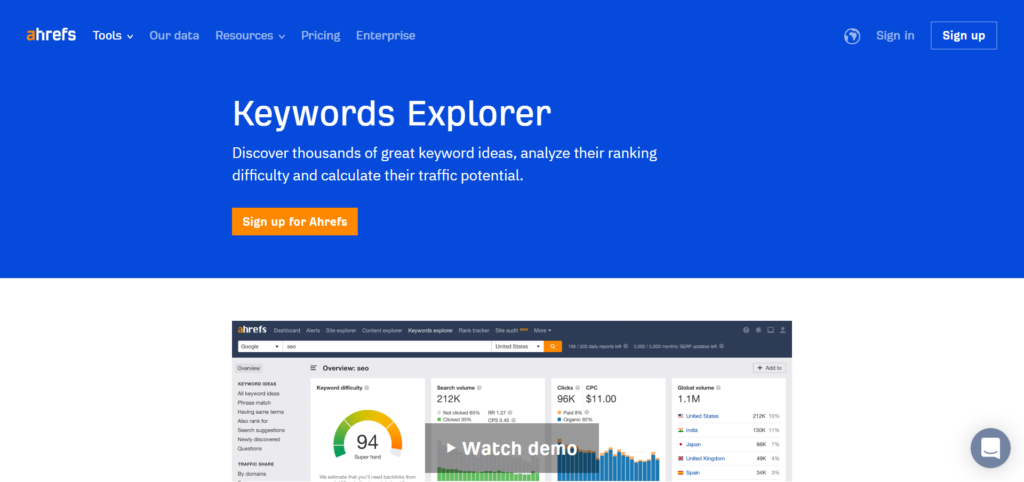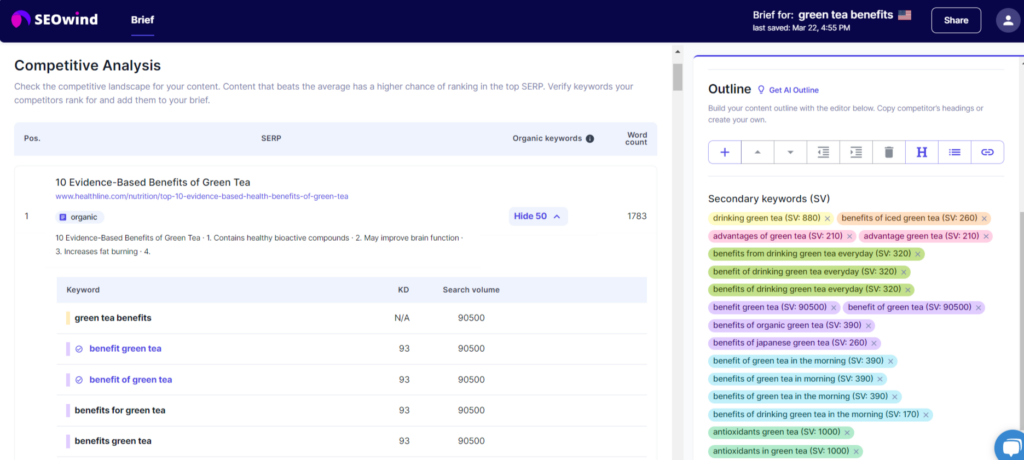One thing remains constant: SEO success begins with effective keyword planning. If you’re determined to improve your SEO strategy and achieve higher search rankings, obtaining an edge in keyword planning can make all the difference. In this comprehensive guide, we’ll explore key elements of keyword planning, discuss various research tools at your disposal, and provide actionable strategies for achieving outstanding results. Let’s dive into keyword planning and set the stage for unparalleled SEO success in 2024.
What is Keyword Planning?
Keyword planning is a critical aspect of Search Engine Optimization (SEO) that entails identifying relevant keywords that potential customers are likely to use while searching for products or services like yours. These keywords are decisive in driving targeted organic traffic by helping search engines understand your content and when it should be shown on search result pages.
The process encompasses several aspects, such as:
- Researching popular industry terms aimed at understanding online trends
- Assessing current website performance based on targeted keywords
- Organizing and prioritizing selected keywords
- Developing a cohesive strategy for effectively targeting high-ranking positions
It emphasizes finding the optimal balance between relevance, competition level, user intent, and monthly search volumes for each term—ultimately ensuring that you target prospects most likely to engage with your brand.
Understanding keyword planning helps us visualize its significance holistically; now, let’s delve deeper into why it is essential to any successful SEO campaign.
Why is Keyword Planning Important?

Keyword planning is crucial to any successful SEO campaign, and its importance cannot be overstated. It helps you identify the keywords your target audience uses when searching for information on search engines and offers insights into their preferences and behavior. Let’s discuss some of the main reasons why keyword planning is essential.
Competitive Advantage
Staying one step ahead of your competitors is vital to understanding their strategies and identifying gaps in existing content. By incorporating effective keyword planning, you can gain a competitive advantage:
- Outrank your competition: Well-researched keywords enable you to optimize your website, allowing it to rank higher in search results.
- Capitalize on untapped opportunities: You might discover high-potential yet low-competition keywords your competitors haven’t targeted.
- Uncover new trends: Stay updated with emerging market trends by frequently researching updated keyword lists related to your industry.
Relevance to Target Audience
Understanding your target audience’s needs and preferences is paramount for developing relevant content that resonates with them. Utilizing proper keyword planning ensures that you speak the same language as your audience:
- Meet user intent: Keywords should align with what users are looking for; this way, visitors find value in your content.
- Identify potential gaps: Researching and analyzing various keywords will highlight where users still seek valuable or comprehensive information.
- Guide content creation: Incorporate relevant topics within your chosen keywords, enhancing user engagement while fulfilling their expectations.
Increased Visibility
The primary objective of SEO efforts is attracting a larger audience through improved visibility within search engines like Google. Here’s how strategic keyword planning boosts visibility:
- Drive organic traffic: Employing well-researched keywords directly impacts how search engines index and display your webpage in SERPs (search engine results pages), thereby increasing organic traffic.
- Target long-tail keywords: Long-tail keywords, which consist of three or more words, tend to be less competitive but provide greater specificity – this enables you to rank higher for those terms and cater to highly-specific user intent.
- Boost CTR (click-through rates): Appearing in the top search results increases the likelihood of users clicking on your webpage, driving a higher click-through rate.
In conclusion, keyword planning is an instrumental facet of SEO that offers numerous benefits. It provides a competitive advantage by helping you outrank rivals, ensuring relevance with your target audience, and granting increased visibility in search engine results. A well-executed keyword plan forms the foundation of any successful online marketing campaign. Hence, it must never be overlooked.
Steps of Keyword Planning

Research and Analysis
The initial stage in keyword planning involves comprehensive research and analysis. This step is crucial because it lays the foundation for your SEO strategy. To begin, you will need to:
- Identify your target audience: Understand your potential customers and their language when searching for products, services, or information relevant to your industry.
- Brainstorm a list of relevant topics: Consider the broader themes that connect with your target audience’s needs, preferences, and interests.
- Find related keywords: Use keyword research tools (e.g., Google Keywords Planner) to discover phrases connected to your chosen topics. Remember to look for head terms (shorter, more general keywords) and long-tail keywords (longer, more specific keyword phrases).
- Analyze web page for keywords: Examine your website and competitors’ sites to pinpoint commonly utilized words that can boost organic search performance.
- Check search volume for keywords: Utilize reliable keyword research tools to assess how often users search particular phrases every month.
You can generate an extensive list of high-potential keywords that speaks directly to your target audience by conducting thorough research and analysis.
Organization and Prioritization
After completing your research phase in keyword planning, it’s essential to organize this data systematically, as it allows you (and possibly other team members) to work efficiently on executing strategies around these carefully selected keywords. The following steps may help guide you through this process:
- Categorize related words: Group similar phrases into clusters based on main ideas or relationships between them.
- Prioritize according to relevance: Evaluate which terms are most significant towards meeting business objectives by considering user intent, conversion probability, or informational value concerning the given topic.
- Assess keyword competition: Determine how challenging it would be to rank well on search engine result pages (SERPs) for each keyword by investigating competitors and the number of other websites vying for similar spotlights. Note that some high-volume phrases might be challenging to outrank due to intense rivalry.
- Choose a balance between search volume and competition: Aim to identify keywords with considerable search volumes but relatively low levels of competition, as they afford you better opportunities to improve your organic rankings substantially.
As you go through organization and prioritization steps, be open to refining your initial list – narrowing it down or expanding it where necessary – ultimately ending up with a well-organized selection of keywords optimized for SEO success.
Strategy and Execution
Once you have a comprehensive list of organized and prioritized keywords, develop an effective strategy to optimize your online presence both from a content creation standpoint as well as technical optimization, ensuring:
- Content Creation: Produce high-quality, informative, and engaging materials that incorporate relevant keywords naturally within the text, headings, titles, or meta-descriptions.
- On-page Optimization: Ensure your website utilizes best practices regarding on-page SEO, such as proper HTML structure, URL optimization, loading speed enhancement, or mobile readiness.
- Off-page Optimization: Strengthen your site’s authority by earning backlinks from other reputable sources in alignment with ethical tactics (e.g., guest posts or localized niche directories submissions).
- Tracking & Adjusting: Continuously monitor key performance indicators (KPIs) such as organic traffic improvements or higher SERP visibility against particular keyword sets over time
Keyword Planning Tools

Success in search engine optimization (SEO) comes from efficient keyword planning, and the tools you use will significantly impact your efforts. This section will explore some of today’s most popular keyword research tools.
Google Keyword Planner

As the name suggests, Google’s Keyword Planner is a top choice for many SEO specialists due to its familiarity with Google’s algorithm and vast data pool gathered from billions of searches. This free tool allows you to:
- Discover new keywords by using seed keywords or phrases,
- Get search volume and forecasts for selected keywords,
- Analyze your competitors’ keywords,
- Find related and long-tail keywords.
Setting up a free Google Ads account is essential to leverage the full potential of Google’s Keyword Planner. While this tool caters particularly well to pay-per-click (PPC) advertising campaigns, it can still offer valuable insights for organic SEO purposes.
WordStream Free Keyword Tool

WordStream’s Free Keyword Tool makes obtaining relevant suggestions and long-tail keywords quick and easy. Not limited to just Google but encompassing Bing as well, key features include:
- Finding niche-specific keywords.
- Identifying both popularity and competition levels.
- Segmenting results geographically.
While WordStream offers limited access to its functionalities through its free version, a paid subscription unlocks extra useful analytics when planning complex strategies.
Ahrefs Keywords Explorer

Ahrefs Keywords Explorer takes your keyword planning game to new heights. Recognized for its vast database that spans ten search engines such as YouTube, Amazon, or Baidu, allowing users to optimize content beyond specific browsers like Google and Bing, Ahrefs boasts unique selling points:
- Generating thousands of highly relevant keyword ideas.
- Providing extensive metrics on each keyword like monthly search volume, click-through rate (CTR), and ranking difficulty score.
- Offering insights into how many visitors click organic search results instead of ads.
A paid subscription is required to access Ahrefs Keywords Explorer. Still, its value is evident when expanding your SEO reach across multiple platforms.
SEMrush Keyword Magic Tool

For professionals seeking a robust and comprehensive keyword research tool, look no further than SEMrush’s Keyword Magic Tool. As part of the extensive SEMrush suite for SEO and digital marketing management, this feature offers the following:
- Over 20 billion indexed keywords.
- Automatic keyword grouping and easy filtering by metrics like search volume or competition level.
- Quick identification of long-tail, question-based, or transactional keywords.
You will need a paid subscription to take advantage of the boundless possibilities of using the SEMrush Keyword Magic Tool. However, it’s worth considering if you’re looking to invest in a robust platform that covers all aspects of your digital marketing campaign.
SEOwind

SEOwind is another helpful resource for competitive keyword planning in any marketer’s toolbox. When crafting new content for a specific keyword, SEOwind analyzes top-ranking content and keywords they rank for in the top 30. This lets you quickly plan which phrases and topics your content should address.
Moreover, the keywords are AI-clustered, making it much easier to use them when writing.
Strategies for Effective Keyword Planning
Keyword planning is a critical aspect of any successful SEO strategy. A well-rounded keyword plan provides insight into target-audience preferences, popular search terms, and potential long-tail keywords. In this section, I’ll explain four essential strategies to maximize the effectiveness of your keyword planning initiatives.
Identify Your Target Audience
Before diving into keyword research, it’s crucial to identify your target audience. Knowing who you are trying to reach helps you tailor content that meets their unique needs and interests. To do this:
- Define your ideal customer persona, including demographic characteristics, interests, pain points, and motivations.
- Research online communities where your target audience congregates to discover their preferred discussion topics.
- Analyze your competitors’ customer base for additional insights on common traits among existing consumers in your industry.
Once you have a clear understanding of your target audience, it becomes easier to select relevant keywords that resonate with them.
Create a List of Keyword Ideas
With an identified audience in mind, the next step is creating a comprehensive list of relevant keywords about the questions or problems they might be experiencing. Use the following methods to come up with a diverse set of potential keyword ideas:
- Brainstorm topics that address the everyday needs and desires of your target audience.
- When entering a query related to your niche, utilize the suggestions from Google Autocomplete and related searches.
- Use SEO tools such as Google Keyword Planner or Ahrefs Keywords Explorer to find related keywords based on seed ideas.
- Examine competitor websites and analyze web page content for frequently used phrases or recurring themes.
Remember that including short-tail (one or two words) and long-tail (three or more words), keywords will help cater to different users’ search intents more effectively.
Analyze Search Volume and Competition
Once you’ve compiled an extensive list of potential keywords, it’s time to analyze search volume and competition around these terms. High search volume indicates a strong interest in the subject. In contrast, high competition levels imply that many websites are trying to rank for that specific query.
- Use Google Keyword Planner or other keyword research tools to check search volume and competition.
- Prioritize keywords with moderate-high search volumes and low-moderate competition levels since they often have untapped potential in driving traffic.
- Assess how well your website (or current content) already ranks for relevant keywords, as this could be an area of opportunity when developing new pages or revising existing ones.
These insights will help you optimize your content strategy and improve your chances of outranking competitors on SERPs (search engine results pages).
Look for Long Tail Keywords
Targeting long-tail keywords caters to users’ specific search intents and enhances user experience. Additionally, building content around these exact phrases makes you more likely to rank higher due to less competition.
To find suitable long-tail keywords:
- Analyze web page data from popular articles within your niche using SEO tools like Ahrefs Keywords Explorer or SEMrush Keyword Magic Tool.
- Create combinations of related keywords and phrases using online suggestions such as Google-related searches or the LSIGraph tool.
- Discover long-tail variations based on seed ideas through tools like AnswerThePublic, which provides questions commonly searched alongside those key terms.
As you implement these strategies into your keyword planning efforts, remember that continual analysis and revision are necessary for optimal results. Adapt your approach based on performance metrics over time to continuously improve SEO success.

How to Use Google Keyword Planner for SEO
Google Keyword Planner is a powerful tool designed to help you optimize your website’s SEO. This free tool lets you find highly relevant keywords for your business, analyze your webpage, and develop an effective keyword strategy. In this section, we will go through setting up a Google Keyword Planner account and how to use it effectively.
Set Up Your Account
Before you start exploring Google Keyword Tool, make sure you have a valid Google Ads account, which is required to access the tool:
- If you haven’t already done so, create a Google Ads account by visiting ads.google.com.
- Sign in with your existing Gmail credentials or create a new account.
- Follow the steps to set up a simple ad campaign (this won’t incur any cost since you don’t have to launch the ad.)
- Once the setup is complete, click ‘Tools & Settings’ in the top right corner.
- Click ‘Keyword Planner’ under Planning in the dropdown menu that appears.
You are now ready to dive into keyword research!
Discover New Keywords
Now that your Google Keyword Planner account is all setup, let’s explore how it can help you discover new keywords for SEO:
- Within ‘Keyword Planner,’ select “Discover new keywords.”
- Enter one or multiple words related to your niche or specific topics within your content.
- Click on the ‘Get Results’ button.
The results will show metrics like average monthly searches, competition level, and more for each suggested keyword. Additionally, these results can be filtered based on location or language preferences.
To find related keywords:
- Expand the ‘Keywords Ideas’ tab at the bottom of the page.
- Browse through available suggestions and note those most relevant to your target audience.
By analyzing these keywords and their respective metrics, you can gain valuable insights into your niche and discover growth opportunities.
Get Monthly Search Volume and Forecasts
After identifying potential keywords, it’s essential to assess their search volume and other important metrics:
- Return to the ‘Keyword Planner’ main menu and select “Get search volume and forecasts.”
- Enter one or multiple keywords that you are considering targeting.
- Click on the ‘Get Started’ button.
Google Keyword Planner will provide a range of data, including historical search volume trends, competition level, and forecasted performance. The provided information can reveal key insights, such as the seasonality of specific keywords or how to prioritize your efforts based on estimated ROI.
How to Use Google Keyword Planner for PPC
Pay-per-click (PPC) advertising is a strategy in which businesses create ads and pay only when users click on the ad, driving traffic to their websites. To create successful PPC campaigns, finding the right keywords is essential. One of the most popular keyword research and planning tools is Google Keyword Planner. This section will discuss how you can use Google Keyword Planner to plan your PPC campaigns effectively.
Find Low Competition Keywords
Target low-competition keywords that are still highly relevant to your audience to maximize your campaign’s success without exhausting your budget. With Google Keyword Planner, follow these steps:
- Log into your Google Ads account and navigate to “Tools & Settings.”
- Click on “Keyword Planner” under the “Planning” tab.
- Select “Discover new keywords.”
- Enter relevant terms or phrases related to your niche or copy-paste a URL from one of your competitors’ landing pages.
- Click “Get Results” and access relevant keyword suggestions and search volume data.
- Analyze the “Competition” column for each keyword suggestion; look for those marked as ‘Low.’
Remember that while low-competition keywords might have lower search volumes, targeting them in your PPC campaigns can improve ad visibility and lead to higher conversion rates at a lower cost per click (CPC).
Analyze Competitors’ Keywords
Another effective strategy for optimizing your PPC campaigns involves analyzing the keywords used by your competitors – doing so provides valuable insights into which terms work best within your niche. To analyze competitor keywords using Google Keyword Planner:
- Identify direct competitors within your industry and obtain their website URLs.
- Click on “Discover new keywords” in Google Keyword Planner.
- Choose the “Start with a website” option and paste one of your competitors’ URLs in the field provided.
- Select “Entire site” or “Specific page,” depending on the scope of your competitor analysis.
- Click “Get Results”; Google will then generate a list of related keywords based on the content found on the competitor’s website.
- Review this list and identify high-performing keywords relevant to your niche.
By implementing these strategies, you can efficiently use Google Keyword Planner to help optimize your PPC campaigns. Finding low-competition keywords and analyzing competitors’ top terms will equip you with the knowledge needed to create more targeted ads. Ultimately, it will increase visibility, clicks, and conversions while minimizing advertising costs.
Is Google Keyword Planner Enough for Keyword Research?

Google Keyword Planner is a powerful and versatile tool that many search engine optimization (SEO) professionals consider indispensable. But is it enough to carry out comprehensive keyword research? In short, the answer is no. While the Google Keyword Planner can provide valuable insights, it’s good to use it with other tools and techniques to ensure a well-rounded approach to keyword planning that will yield successful results.
Limitations of Google Keyword Planner
Even though Google’s offering has several advantages, some limitations may hinder thorough keyword research:
- Insufficient detail: The data provided by this tool may only sometimes paint a detailed picture of all possible queries your target audience might use. To get a solid understanding of user intent and preferences, you’ll need to explore additional resources.
- Focus on PPC campaigns: The platform’s primary purpose is pay-per-click (PPC) advertising, meaning many of its features pertain to paid ads rather than organic SEO campaigns.
- Keyword volume grouping: The search volumes can sometimes be grouped with closely related keywords. This makes it challenging to discern accurate traffic data for individual search terms.
- Lack of long-tail keyword information: Discovering long-tail keywords—often less competitive but precious in driving focused traffic—is more difficult using Google’s tool alone.
Complementary Tools for Effective Keyword Planning
To conduct a comprehensive analysis during the keyword research process, consider incorporating several complementary tools into your strategy:
- Ahrefs Keywords Explorer: Gain deeper insights into topics and uncover highly specific long-tail keywords with Ahrefs’ trial package or main subscription plan.
- SEMrush Keyword Magic Tool: Access detailed analytics on any given term alongside an extensive list of suggested alternatives from SEMrush’s vast database.
- WordStream Free Keyword Tool: An excellent free alternative to Keyword Planner, this can help you find related terms and explore niche areas.
- SEOWind: Unlock the potential of semantic keyword research by tapping into AI-powered tools offered through SEOWind’s services.
Enhanced Approach to Keyword Research
By incorporating various complementary tools into your repertoire, you’ll be able to:
- Identify additional opportunities: Unearth keywords not covered in Google Keyword Planner’s dataset to diversify your content and reach untapped segments of your target audience.
- Understand competitive landscapes better: Analyze competitors’ keyword usage patterns with tools like Ahrefs or SEMrush—valuable information that can bolster your SEO success.
- Dive deeper into long-tail keywords: Obtain granular data on longer search queries with dedicated solutions like WordStream or Ahrefs’ Keywords Explorer for a more targeted approach.
While the Google Keyword Planner is an important tool for modern SEO efforts, relying on it alone will likely produce incomplete results. Expanding your insights through other platforms and embracing a multifaceted approach will ensure optimal keyword planning—and ultimately pave the way to SEO success.
In-Depth Keyword Research Process
Performing in-depth keyword research is crucial for the success of your SEO strategy. This process involves finding keywords and understanding their relevance and potential impact on your website’s performance. This section discusses three essential steps to conduct in-depth keyword research effectively.
1: Identifying Your Goals and Objectives
The first step in the depth keyword research process is to identify the goals and objectives of your SEO campaign. Knowing what you want to achieve will help guide your efforts throughout the research process. Some standard plans include:
- Improving organic search rankings
- Increase website traffic
- Boosting conversions and sales
- Enhancing brand awareness
Once you clearly understand your goals, you can tailor your keyword research efforts to achieve those objectives. For instance, if improving organic search rankings is your primary goal, find related keywords with high search volume and moderate competition levels.
2: Brainstorming Relevant Topics and Ideas
After defining the goals and objectives of your SEO strategy, begin brainstorming relevant topics pertinent to your niche or industry. These ideas should correspond closely with your target audience’s interests and needs. To get started:
- Review existing content on your site for successful pieces you could expand upon.
- Monitor social media trends within your industry and take note of popular conversations among viewers.
- Conduct competitor analysis to examine their top-performing keywords (tools like Ahrefs or SEMrush can assist).
Remember that relevance is key throughout this ideation stage – select topics that align with your business goals and audience preferences.
3: Analyzing Search Volume & Competition Levels
After compiling a list of possible keywords derived from brainstormed topic ideas, assess their search volume using tools like Google Keywords Planner or WordStream Free Keyword Tool. Search volume reflects how often users enter specific queries into search engines; the higher the volume, the more potential website traffic it promises.
However, focusing solely on keyword search volumes is a mistake. You must also evaluate competition levels – determining how hard it will be to rank for certain terms based on the strengths of existing competitors.
To find keyword search volume and analyze web page competitiveness, leverage Ahrefs Keywords Explorer and SEMrush Keyword Magic Tool tools. Doing so can garner essential insights into which keywords hold vested value toward your SEO goals while maintaining reasonable chances of ranking success.
In essence, conducting in-depth keyword research entails setting clear objectives, brainstorming & refining relevant topics and ideas, and analyzing search volume and competition levels—all in pursuit of effective SEO outcomes.


